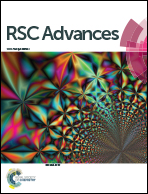Cell uptake mechanisms of glycosylated cationic pDNA–cyclodextrin nanoparticles
Abstract
The incorporation of carbohydrate functional elements in the architecture of polycationic amphiphilic cyclodextrins (paCDs) provides glycosylated paCDs (pGaCDs) that form transfectious nanocomplexes (glycoCDplexes) with pDNA. In this study, we aimed at elucidating the internalization mechanisms at play and their incidence in transfection efficiency for glycoCDplexes formulated with 6-amino-6-deoxy-β-D-glucopyranosyl-appended pGaCDs in comparison with mannosylated and non-glycosylated congeners. Preliminary data showed a relatively high uptake of the 6-aminoglucosylated nanocomplexes by BNL-CL2 hepatocytes that correlated with a strong affinity towards the galactose-specific peanut agglutinin (PNA) lectin, suggesting that the galactose-binding asialoglycoprotein receptor at the surface of hepatocytes might be involved in glycoCDplex internalization. Transfection kinetics, internalization rates and protein expression data in BNL-CL2 ASGPR-expressing cells and COS-7 ASGPR-devoid epithelial cells in the absence and presence of different inhibitors of clathrin-dependent (chlorpromazine), caveolae-dependent (genistein) and macropinocytosis (amiloride) endocytic routes evidenced significant differences in cell uptake pathways and fate of glycoCDplexes as compared with CDplexes. Most importantly, such differences were dependent on the cell type and on the carbohydrate coating moiety. Clathrin-mediated uptake in BNLCL-2 cells is particularly favored for the 6-amino-6-deoxyglucose CDplexes, supporting the interplay of specific recognition phenomena. Competitive uptake and transfection experiments conducted in the presence of asialofetuin or of a polyclonal ASGPR-antibody, as well as siRNA-mediated ASGPR-specific gene knockdown, supported the involvement of ASGPR, firmly demonstrating the dual role of the 6-amino-6-deoxyglucose motif as DNA and lectin receptor ligand. The results reinforce the use of carbohydrates in glycoCDplexes to modulate cellular uptake and transfection capabilities in a cell-dependent manner.


 Please wait while we load your content...
Please wait while we load your content...